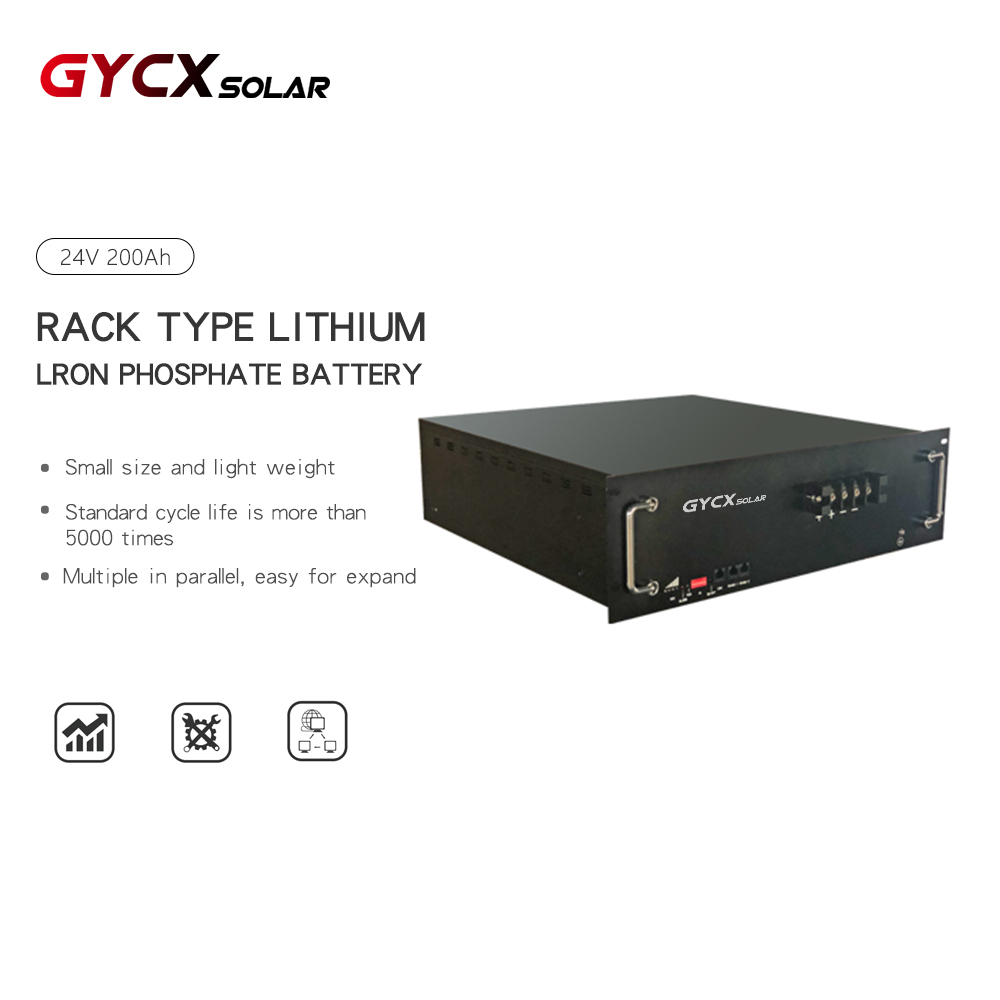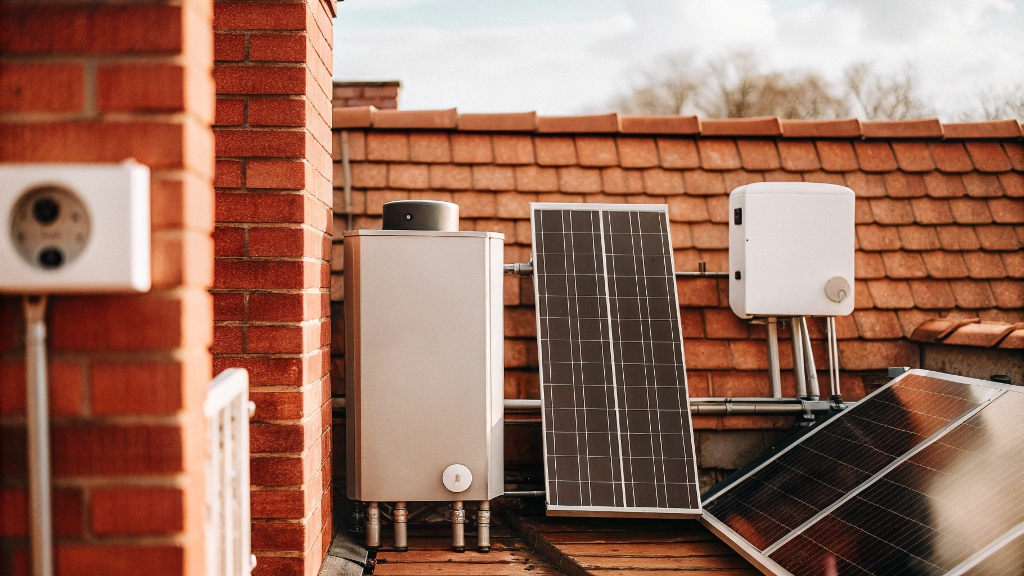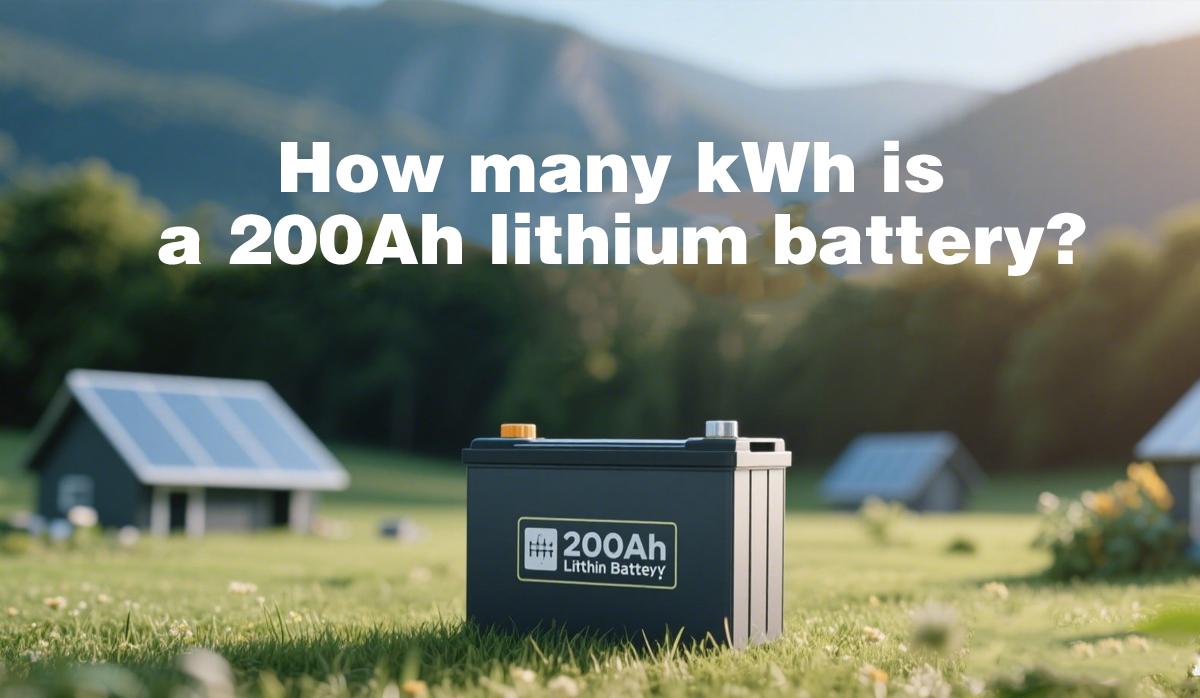200Ah 리튬 배터리는 몇 kWh입니까?? 쌓을 수있는 태양열 배터리 이해
1. 소개
태양 에너지가 지속 가능한 생활을위한 초석이됩니다, 배터리 저장을 이해하는 것이 그 어느 때보 다 중요합니다. 태양 애호가와 시스템 디자이너들 사이의 일반적인 질문 중 하나는: “200Ah 리튬 배터리는 몇 kWh입니까??”
이 기사는 AMP 시간의 전환을 설명 할뿐만 아니라 (아) 킬로와트시 (kWh) 또한 이러한 값이 태양계의 성능에 어떤 영향을 미치는지에 대한 통찰력을 제공합니다.. 게다가, 사용의 이점에 대해 논의 할 것입니다 쌓을 수 있는 태양전지 다재다능하고 확장 가능한 에너지 저장.
업계 전문가 및 실제 응용 프로그램의 연구에 대한 연구, 이 포괄적 인 안내서는 태양 에너지 시스템을 설계 할 때 에너지 저장 요구를 평가하고 정보에 입각 한 결정을 내릴 수 있도록 설계되었습니다..
2. 배터리 용량 이해: AMP 시간 및 킬로와트시
배터리 용량은 일반적으로 두 가지 방식으로 표현됩니다:
- 앰프 시간 (아): 배터리가 시간이 지남에 따라 얼마나 많은 충전을 제공 할 수 있는지를 나타냅니다..
- 킬로와트시 (kWh): 저장된 총 에너지를 나타냅니다. 전압 제품입니다 (볼트로) 그리고 현재 용량 (앰프 시간), 분할 1,000.
기본 변환 공식
AH에서 KWH로 변환 할 표준 공식은:
[\텍스트{kWh} = frac{\텍스트{전압 (V)} \시간 텍스트{앰프 시간 (아)}}{1000}
]
예를 들어, 48V와 200AH로 평가 된 배터리는 이론적 에너지 용량을 가질 것입니다.:
[\frac{48 \타임스 200}{1000} = 9.6 \텍스트{ kWh}
]
이는 다음을 의미합니다., 이상적인 조건에서, 배터리는 최대 저장할 수 있습니다 9.6 KWH의 에너지.
3. 계산: 200AH를 KWH로 변환합니다

200Ah 리튬 배터리에 몇 개의 kWh가 있는지 결정할 때, 시스템 전압은 중요한 역할을합니다. 다른 전압이 에너지 용량에 어떤 영향을 미치는지 살펴 보겠습니다:
- 12V에서:
[
\frac{12 \타임스 200}{1000} = 2.4 \텍스트{ kWh}
] - 24V에서:
[
\frac{24 \타임스 200}{1000} = 4.8 \텍스트{ kWh}
] - 48V에서:
[
\frac{48 \타임스 200}{1000} = 9.6 \텍스트{ kWh}
]
일반적으로, 태양 저장 응용 프로그램의 경우, 배터리는 더 높은 전압에서 사용됩니다 (예를 들어, 48V) 그들은 소형 형태로 더 높은 에너지 밀도를 제공하기 때문에. 48V 200Ah 배터리, 그러므로, 대략 전달합니다 9.6 KWH의 에너지, 주거 및 상업 시스템 모두에 인기있는 선택으로.
4. 사용 가능한 에너지에 영향을 미치는 요인
계산 된 KWH는 이론적 에너지 용량을 제공합니다, 몇 가지 실제 요소가 배터리의 실제 사용 가능한 에너지에 영향을 줄 수 있습니다.:
ㅏ. 방전 깊이 (국방부)
대부분의 리튬 배터리는 수명을 연장하기 위해 완전히 방전해서는 안됩니다.. 예를 들어, 배터리가있는 경우 80% 국방부, 오직 80% 의 9.6 KWH는 정기적으로 사용할 수 있습니다.
사용 가능한 에너지 = 9.6 KWH × 0.8 = 7.68 kWh
비. 배터리 효율성
충전 및 배출주기 동안, 배터리는 에너지 손실이 발생합니다. 일반적인 리튬 배터리는 주변의 왕복 효율을 가질 수 있습니다. 90%, 당신이 나가는 실제 에너지는 약간 적다는 것을 의미합니다..
씨. 온도 및 환경 조건
극한의 온도, 뜨겁거나 차갑습니다, 배터리 성능에 영향을 미치고 용량과 효율성을 줄일 수 있습니다.. 적절한 설치 및 열 관리는 최적의 성능을 유지하는 데 중요합니다..
디. 노화와 사이클 수명
시간이 지남에 따라, 배터리는 자연스럽게 용량을 잃습니다. 정기적 인 사용, 권장 매개 변수 내에서도, 배터리의 저장 능력을 점차적으로 감소시킵니다.
이러한 요소를 이해하면 에너지 요구를 충족시키는 태양 저장 시스템을 계획하는 데 중요합니다..
5. 배터리 기술 비교
계산과 적절한 제품 선택이 중요한 이유를 강조합니다, 태양 에너지 저장을 위해 종종 고려되는 다양한 유형의 배터리를 비교해 봅시다.:
| 배터리 유형 | 일반적인 전압 | 사이클 수명 | 에너지 밀도 | 애플리케이션 |
|---|---|---|---|---|
| 리튬 이온 | 48V (천하게) | 3000+ 사이클 | 높은 | 주거용 & 상업적 태양 |
| 리드산 | 12V-24V | 500-1000 사이클 | 낮추다 | 백업 시스템, 오프 그리드 설정 |
| 흐름 배터리 | 다양합니다 | 아주 길다 | 보통의 | 그리드 스케일, 장기 저장 |
리튬 이온 배터리는 일반적으로 리드-산 옵션에 비해 더 높은 에너지 밀도와 더 긴 사이클 수명을 제공합니다., 현대 태양 광 응용 프로그램에 더 적합합니다. 그 동안에, 흐름 배터리와 같은 새로운 기술, 대규모 응용 프로그램에 대한 약속, 주거용 설치에서는 덜 일반적입니다.
6. 스택 가능한 태양열 배터리를 선택하는 이유는 무엇입니까??
의 개념 쌓을 수 있는 태양전지 에너지 저장 요구에 대한 유연성과 확장 성을 제공하도록 설계되었습니다.. 그들이 이상적인 선택 인 이유는 다음과 같습니다:
모듈형 디자인
쌓을 수있는 태양열 배터리는 더 작은 시스템으로 시작하고 에너지 요구가 증가함에 따라 더 많은 모듈을 추가 할 수 있습니다.. 이 모듈성은 완전한 점검없이 시스템을 확장 할 수 있도록합니다..
공간 효율
쌓을 수있는 시스템의 설계는 작습니다, 공간이 제한된 설치에 적합합니다. 발자국을 최소화하면서 저장 용량을 최대화합니다.
유지 보수 및 통합의 용이성
이 시스템은 간단한 설치 및 다른 태양열 구성 요소와의 원활한 통합을 위해 설계되었습니다.. 그들의 디자인은 유지 보수가 간단하도록 보장합니다, 인버터 및 에너지 관리 시스템과 같은 구성 요소는 조화에서 작동합니다..
우리의 제품 라인업에서 GYCX 솔라, 우리의 적층형 리튬 배터리 솔루션은 많은 이점을 보여줍니다.
추가적으로, 보완 제품을 고려하십시오:
7. GYCX 태양 광 제품을 시스템에 통합합니다

강력한 태양 에너지 시스템을 구축하는 것은 원활하게 함께 작동하는 제품을 선택하는 것을 의미합니다.. ~에 GYCX 솔라, 당사의 제품 범위는 다양한 에너지 저장 요구를 충족시키고 시스템 확장 성을 보장하도록 설계되었습니다..
적층형 리튬 배터리
우리 모듈 식 적층형 리튬 배터리 시스템은 유연성과 확장 용이성을 제공하도록 설계되었습니다.. 그들은 미래의 성장이 예상되는 주거 및 상업용 응용 프로그램에 적합합니다..
태양 전지
우리의 헌신 태양 전지 솔루션은 심해 성능을 위해 최적화됩니다, 그들이 일일 전하 차지주기를 효율적으로 처리하도록합니다.
태양광 인버터
효율없이 태양계가 완료되지 않습니다 태양광 인버터. 배터리에 저장된 DC 에너지를 AC 전력으로 변환합니다., 필요한 경우 저장된 에너지를 사용할 수 있도록 보장하십시오.
이러한 고품질 제품을 통합함으로써, 당신은 미래의 에너지 요구에 신뢰할 수 있고 적응할 수있는 태양 에너지 시스템을 보장합니다..
8. 실용적인 팁 및 유지 보수
태양열 배터리 시스템을 최대한 활용합니다, 다음의 실용적인 팁을 고려하십시오:
정기적 인 모니터링
에너지 관리 시스템을 사용하여 배터리 성능을 정기적으로 모니터링하십시오.. 이것은 모든 문제를 조기에 감지하고 최적의 효율성을 보장하는 데 도움이됩니다..
환경 통제
온도가 안정적인 환경에 배터리 저장소가 설치되어 있는지 확인하십시오.. 적절한 환기 또는 기후 제어는 배터리 수명을 크게 연장 할 수 있습니다..
모범 사례를 준수합니다
설치 및 유지 보수를 위해 제조업체 지침을 따르십시오. 여기에는 적절한 배선이 포함됩니다, 안전한 장착, 그리고 정기적 인 검사.
확장 성 계획
우리와 같은 모듈 식 시스템을 선택하십시오 적층형 리튬 배터리 요구가 발전함에 따라 에너지 저장을 쉽게 확장 할 수 있도록. 이 미래는 태양 에너지 시스템을 제공하고 시간이 지남에 따라 투자를 보호합니다..
9. 결론
200ah 리튬 배터리가 제공 할 수있는 KWh 수 결정은 효율적인 태양 에너지 시스템을 설계하는 데 기본적인 단계입니다..
표준 48V 등급, 200Ah 배터리는 이론적으로 주변에 제공됩니다 9.6 KWH의 에너지, 비록 실제 배출 심도와 같은 실제 요인, 효율성 손실, 환경 조건은 유용한 용량에 영향을 미칩니다.
이러한 계산과 배터리 성능에 영향을 미치는 요소를 이해함으로써, 에너지 저장 요구를 더 잘 계획 할 수 있습니다. 게다가, 모듈 식 선택, 확장 가능한 솔루션 -과 같습니다 쌓을 수 있는 태양전지- 시스템이 효율적이고 확장 가능하다는 것을 알 수 있습니다. ~에 GYCX 솔라, 우리는 다양한 제품을 제공합니다, 우리를 포함하여 적층형 리튬 배터리, 태양 전지, 그리고 태양광 인버터, 태양열 설정에 완벽하게 통합하도록 설계되었습니다.
고품질을 포용하십시오, 태양 에너지 시스템을 최적화하고 지속 가능한 사람을 향한 길을 열리는 목적으로 지어진 기술, 에너지 독립적 미래.

